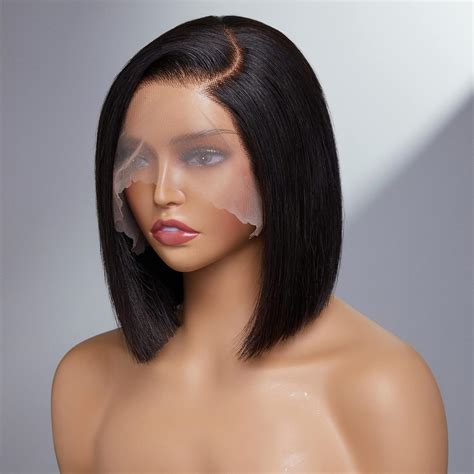Introduction
Wigs have been an essential part of human culture for centuries, providing versatility, style, and convenience. Today, with advancements in technology and materials, wigs come in a wider variety than ever before, catering to diverse needs and preferences. In this comprehensive guide, we delve into the world of wigs, exploring their benefits, types, maintenance, and more.

Benefits of Wearing Wigs
Wigs offer numerous advantages, making them increasingly popular among individuals of all ages and backgrounds:
- Enhance Appearance: Wigs provide an instant transformation, allowing individuals to change their hairstyle, color, and texture effortlessly.
- Conceal Hair Loss: For those experiencing thinning hair or hair loss due to medical conditions or treatments, wigs offer a discreet and stylish solution.
- Protect Natural Hair: Wigs can protect natural hair from damage caused by excessive styling, dyeing, or heat.
- Cost-Effective Alternative: Compared to salon treatments and hair extensions, wigs can be a more cost-effective way to achieve a desired hairstyle.
- Increased Confidence: Wigs can boost confidence by enhancing self-image and providing the opportunity to experiment with different looks.
Types of Wigs
The diverse range of wigs available offers something for everyone. Here are the main types:
- Human Hair Wigs: Made from 100% human hair, these wigs provide the most natural-looking and luxurious option but come at a higher cost.
- Synthetic Hair Wigs: Manufactured from synthetic fibers, these wigs are more affordable, lightweight, and easier to maintain than human hair wigs.
- Lace Front Wigs: Feature a lace panel at the front, creating a natural-looking hairline.
- Full Lace Wigs: Made entirely from a lace base, these wigs offer the highest level of customization and breathability.
- Monotop Wigs: Have a monofilament top that allows the scalp to show through, providing a realistic illusion.
Choosing the Right Wig
Selecting an appropriate wig requires careful consideration of factors such as:
- Head Shape: Wigs come in different cap sizes and shapes to fit various head sizes and shapes.
- Hair Type: The texture and color of the wig should complement the individual’s natural hair or desired look.
- Personal Style: Wigs offer a wide range of styles, from classic bobs to trendy long waves, allowing individuals to express their unique personality.
- Budget: Wigs vary in price depending on type, materials, and quality.
Maintaining Your Wig
Proper care and maintenance are crucial to prolong the lifespan of your wig:
- Wash: Gently wash your wig with a specially formulated shampoo and conditioner designed for wigs.
- Detangle: Use a wide-toothed comb or brush to remove tangles and prevent breakage.
- Dry: Avoid heat when drying your wig to prevent damage. Allow it to air dry or use a blow dryer on a cool setting.
- Store: When not in use, store your wig on a wig stand or in a wig box to maintain its shape.
Innovation in Wig Technology
Advances in wig technology have opened up new possibilities and benefits:
- Biomimetic Wigs: These wigs mimic the scalp’s natural skin tone, creating a seamless and undetectable appearance.
- Heat-Resistant Wigs: Made from synthetic fibers that can withstand high temperatures, heat-resistant wigs allow for styling with heat tools.
- Lightweight Wigs: Innovative materials and construction techniques have produced lightweight wigs that provide comfort all day long.
Conclusion
Wigs have evolved into a versatile and essential accessory for numerous reasons. They offer a convenient, stylish, and effective way to enhance appearance, conceal hair loss, and protect natural hair. With advancements in technology and a vast range of options available, there is a wig to cater to every need and preference. By understanding the benefits, types, and maintenance of wigs, individuals can make informed decisions and enjoy the transformative power of these remarkable hairpieces.
